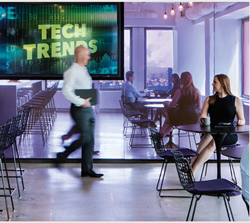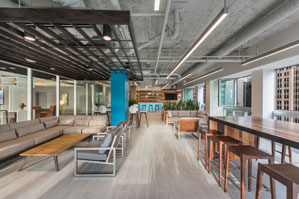Posted on February 21, 2018
By: Richard B. Peiser, Ph.D. and Raymond G. Torto, Ph.D.
 Office building owners have found that to remain competitive in today’s marketplace, they must enliven their buildings by offering more amenities and adding vibrancy to the common areas. Some have introduced a range of new amenities, including outdoor workspaces and food trucks, and they have also programmed areas with happy hours, featured speakers and other activities. The common element in these amenities is that they all “activate” the common space by creating opportunities for socialization among tenants and the opportunity to work in areas beyond the tenant’s suite.
Office building owners have found that to remain competitive in today’s marketplace, they must enliven their buildings by offering more amenities and adding vibrancy to the common areas. Some have introduced a range of new amenities, including outdoor workspaces and food trucks, and they have also programmed areas with happy hours, featured speakers and other activities. The common element in these amenities is that they all “activate” the common space by creating opportunities for socialization among tenants and the opportunity to work in areas beyond the tenant’s suite.
The study examines the following:
- New and different types of amenities that owners are including in buildings, their locations within the building, what they cost and how they are funded.
- Programming or social gatherings in building common areas, the types of activities offered, their frequency, what they cost and how they are funded.
- Whether coworking space is becoming an amenity that owners must offer in their buildings so that tenants can have access to space for occasional overflow situations.






 A fresh-air, 28th-floor amenity lounge has transformed a Chicago office tower.
A fresh-air, 28th-floor amenity lounge has transformed a Chicago office tower. What do office and retail property owners need to know about triple net leases?
What do office and retail property owners need to know about triple net leases?